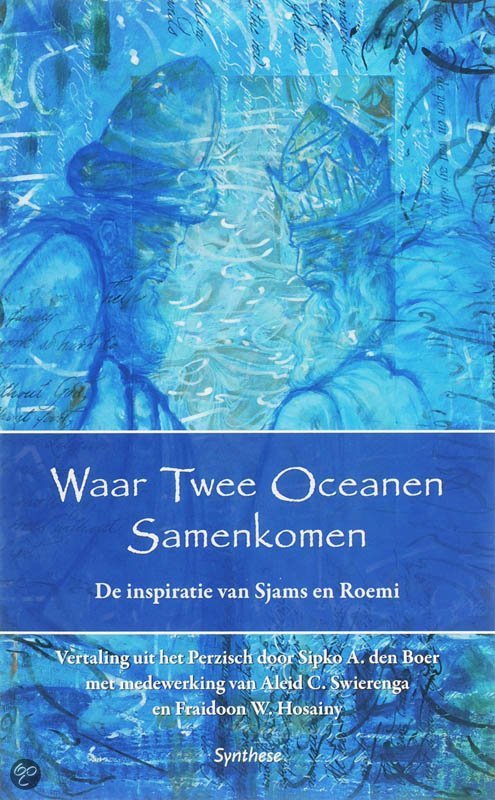In 2007, the remarkable book “Where Two Oceans Meet” (Waar twee oceanen samenkomen) initially went largely unnoticed in our series of Rumi translations. This is presumably because Rumi’s name is absent from the title, causing issues with search engines and algorithms. It wasn’t until 2010, when Elif Shafak’s “The Forty Rules of Love” appeared in a Dutch translation, that interest in Shams of Tabriz began to grow. The back cover reads: “Shafak’s seductive, sharp, and poignant novel brilliantly brings to life the revelations of Shams and Rumi, courageously highlighting the differences between religion and spirituality, censorship and compassion, fear and love.”
The Dutch translator, Manon Smits, contacted me seeking advice on Rumi, Shams, and the Sufis. With the success of “The Forty Rules of Love,” curiosity about Shams has also increased. Since then, “Where Two Oceans Meet” (Waar twee oceanen samenkomen) has become highly sought after on the market, with antiquarian bookshops asking astronomical amounts for a second-hand copy. (However, the book is readily available from us for less than 20 euros!)


In the history of Sufism, there is one figure who remains like a shadow, a mysterious guide who initiated the greatest spiritual writer of all time, Jalal ad-Din Rumi, into the deepest truth. His name is Shams of Tabriz, and his role in Rumi’s life is both crucial and enigmatic.
Shams of Tabriz became known primarily for initiating Rumi and then disappearing without a trace. What remains are the “Maqalat-e Shams” (The Words of Shams), hastily recorded conversations between Shams and Rumi in Konya. Without his own writings, Shams remains an enigma, but his influence is undeniable.
The story of Rumi is incomplete without Shams. Rumi, the master of spiritual love, drew inspiration from his brief but intense contact with this stern, mysterious man. Shams seems to have had only one purpose in his life: to pass on his message to one person, Rumi, who could then convey this message to all of humanity.
Much has been said about the transformation Rumi underwent in the presence of Shams, but not everything is true. The Western myth surrounding Shams, as an ecstatic ‘wild man’ and jester of mysticism, seems to be largely based on cultural projections. It is important to examine the factual sources and understand the true story, without the need to create legendary figures.
Who was Shams? What was his relationship with Rumi? What form of spirituality did he represent? What can we still learn from him today? These are the questions that invite us to take a deeper dive into the history and mystery surrounding Shams of Tabriz. His significance in Sufism transcends myths and calls for a careful approach to unraveling the real story.
In the next part of this blog series, we will further examine Shams’ personality, his relationship with Rumi, and the spiritual lessons he embodied. It’s time to lift the veil of mystery surrounding Shams of Tabriz and discover the treasures of his wisdom.
